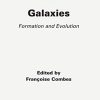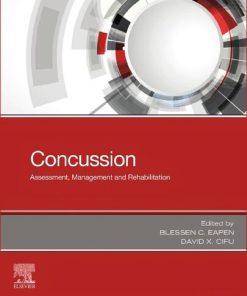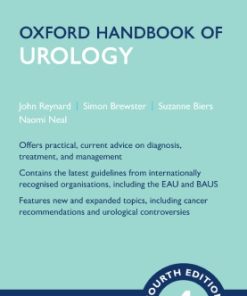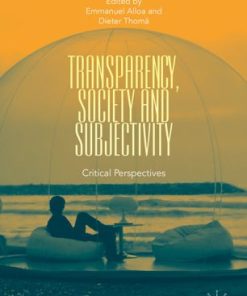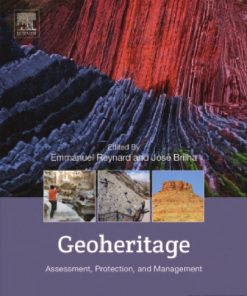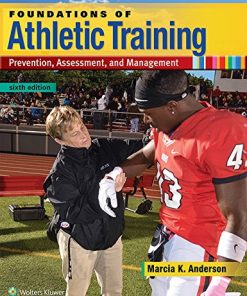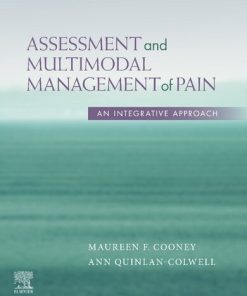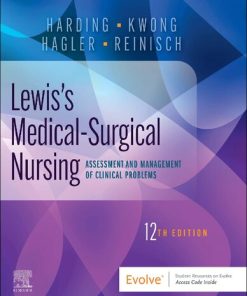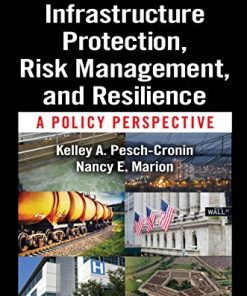Geoheritage Assessment Protection and Management 1st edition by Emmanuel Reynard 0128095423 9780128095423
$50.00 Original price was: $50.00.$25.00Current price is: $25.00.
Geoheritage. Assessment, Protection, and Management 1st edition by Emmanuel Reynard – Ebook PDF Instant Download/DeliveryISBN: 0128095423, 9780128095423
Full download Geoheritage. Assessment, Protection, and Management 1st edition after payment.
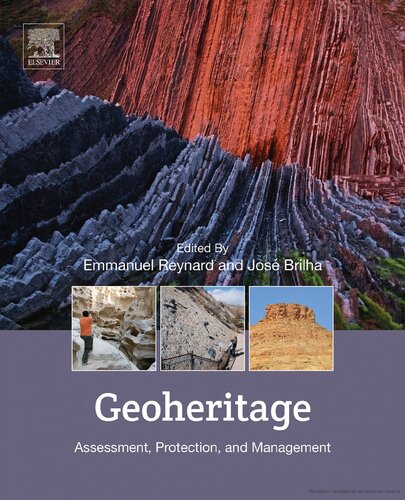
Product details:
ISBN-10 : 0128095423
ISBN-13 : 9780128095423
Author : Emmanuel Reynard
For the last 20 years there has been a growing interest in the geosciences for topics related to geoheritage: geoconservation, geotourism and geoparks. Geoheritage: Assessment, Protection, and Management is the first and only reference book to cover these main topics as well as the relationship of geoheritage to other subjects such as landscapes, conservation, and tourism. The book also includes methodologies for assessment, mapping, and visualisation, along with case studies and colour images of some of the most important global geosites. This book is an essential resource for geoscientists, park and geopark managers, tourism and regional planning managers, as well as university students interested in geoheritage, geosites, geomorphosites, geoconservation, and geotourism. It also includes critical information on UNESCO’s Global Geoparks, World Heritage and Biosphere Reserve sites, national parks and protected areas in general, land-use planning and nature conservation policies, and in the general contribution of geodiversity for sustainable development.
Geoheritage. Assessment, Protection, and Management 1st Table of contents:
Section II: Geodiversity
Chapter 1. Geodiversity: The Backbone of Geoheritage and Geoconservation
Abstract
1.1 Introduction
1.2 Geodiversity as the Backbone of Geoheritage
1.3 Geodiversity as the Backbone of Valuing Abiotic Nature
1.4 Geodiversity as a Backbone of Geoconservation
1.5 Examples
1.6 Conclusions
References
Chapter 2. Methods for Assessing Geodiversity
Abstract
2.1 Introduction
2.2 Geodiversity Assessment and Mapping
2.3 Typologies of Methods for the Assessment of Geodiversity
2.4 Final Remarks
Acknowledgements
References
Chapter 3. Geodiversity Action Plans – A Method to Facilitate, Structure, Inform and Record Action for Geodiversity
Abstract
3.1 Introduction
3.2 Geodiversity Actions Plans
3.3 What Makes a Successful GAP?
3.4 Why Produce a GAP?
3.5 Case Studies
3.6 Concluding Remarks
References
Section III: Geoheritage
Chapter 4. Geoheritage: Inventories and Evaluation
Abstract
4.1 What Makes an Element of Geodiversity Exceptional?
4.2 How Should the High Value of Geodiversity Elements Be Identified and Characterised?
4.3 Why and How Should Geoheritage Be Assessed?
4.4 Final Remarks
Acknowledgements
References
Chapter 5. The Specificities of Geomorphological Heritage
Abstract
5.1 Introduction
5.2 Geomorphological Heritage and Geomorphosites: Definitions
5.3 Geomorphosites: Peculiar Characteristics
5.4 Heritage Geomorphology: A New Branch of the Geomorphological Sciences?
5.5 Concluding Remarks
References
Chapter 6. Fossils, Heritage and Conservation: Managing Demands on a Precious Resource
Abstract
6.1 Introduction
6.2 Why Conserve Fossils?
6.3 Managing Sites of Palaeontological Importance
6.4 Legal Approaches to Conserving Palaeontological Heritage, i.e., Protected Sites Versus Protected Heritage
6.5 Concluding Remarks
References
Chapter 7. Geoheritage and Museums
Abstract
7.1 Introduction
7.2 Geological Collections: What Is Specific About Them?
7.3 Collections, Research and Expertise
7.4 Which Value for Collections?
7.5 Collections and Museums
7.6 Legal Framework
7.7 Final Remarks
Acknowledgements
References
Chapter 8. The Landscape and the Cultural Value of Geoheritage
Abstract
8.1 Introduction
8.2 The Landscape Value of Geoheritage
8.3 The Cultural Value of Geoheritage
8.4 Concluding Remarks
References
Chapter 9. Geomining Heritage as a Tool to Promote the Social Development of Rural Communities
Abstract
9.1 Introduction
9.2 Rehabilitated Mines as a New Resource: Sustainability, Education and Geotourism
9.3 Impacts of the Use of Geomining Heritage: An Opportunity for Development
9.4 Conclusion
Acknowledgements
References
Chapter 10. GSSPs as International Geostandards and as Global Geoheritage
Abstract
10.1 Introduction
10.2 ICS and the International Chronostratigraphic Chart
10.3 Preservation and Maintenance of GSSPs
10.4 GSSPs at Zumaia, Basque Coast UNESCO Global Geopark
10.5 Conclusion
References
Section IV: Geoheritage and Conservation
Chapter 11. The Conservation of Geosites: Principles and Practice
Abstract
11.1 Introduction
11.2 Why Conserve Geosites?
11.3 Principles of Geosite Conservation
11.4 Conservation Frameworks
11.5 Conservation and Management in Practice
11.6 Conclusions and Future Challenges
Acknowledgements
References
Chapter 12. Geoheritage Conservation and Environmental Policies: Retrospect and Prospect
Abstract
12.1 Introduction
12.2 Trends in the Development of Geoconservation
12.3 Geoconservation: Assessment of Progress
12.4 Future Directions in Geoconservation
12.5 Conclusions
Acknowledgements
References
Chapter 13. Geoheritage and World Heritage Sites
Abstract
13.1 Introduction
13.2 World Heritage – Concept and Implementation
13.3 Geoheritage on the World Heritage List
13.4 Examples
13.5 Conclusions
References
Chapter 14. Geoheritage and Environmental Impact Assessment (EIA)
Abstract
14.1 Geoheritage as a Resource and Support of Services and Activities
14.2 An Analysis of the Main Impacts on Geoheritage
14.3 Environmental Impact Assessment
14.4 The Integration of Geoheritage in the EIA Procedures
14.5 Concluding Remarks
References
Section V: Uses of Geoheritage
Chapter 15. Geoheritage: Getting the Message Across. What Message and to Whom?
Abstract
Introduction
Who Are We Trying to Communicate With?
What Do ‘Normal’ People Know? What Do They Want to Know? What Do We Want to Tell Them?
Starting Talking About Geoheritage Where People Are…
What Is Interpretation?
Producing an Interpretation Strategy
‘Themes’ – Do You Hum Them?
‘Words, Words, Words…’
‘Dumbing Down’, But Maintaining Scientific Integrity
‘Did You Know?’ – Is That Interactive?
Getting the Geoconservation Message Across – Keeping the Geoheritage Safe
Keeping Normal People Safe
Keeping the Interpretation Safe
‘Don’t Go With Stranglers’
Just Add Humans…
Have You Been Wasting Your Time? EXTERMINATE, EXTERMINATE, EXTERMINATE
Look at Me!
Pick Me Up! Pick ME Up!
Reconstructions or One Picture Is Worth a Thousand Words
Guided Walks? They Are so Expensive!
Visitor Centres and Museums
Time Lines, Geological Gardens, Rocky Maps and Walls and Stratigraphic Sections
Land Art – and Ecovandalism?
New, and Not so New, Media
Final Remarks
Acknowledgements
References
Chapter 16. Digital Geovisualisation Technologies Applied to Geoheritage Management
Abstract
16.1 Introduction
16.2 The Visualisation of Geoheritage: Strengths and Weaknesses
16.3 Visualisation for Risk Assessment and Site Monitoring
16.4 Visualisation for Geotourism and Geointerpretation
16.5 Development Perspectives in Digital Geoheritage Visualisation
16.6 Conclusion: New Frontiers for Geovisualisation
Acknowledgements
References
Chapter 17. Geoheritage and Geotourism
Abstract
17.1 Introduction
17.2 Relationships Between Geoheritage and Geotourism
17.3 Examples of Relationships Between Geotourism and Geoheritage
17.4 The Critical Relationship Between Geoheritage and Geotourism
17.5 Concluding Remarks
References
Chapter 18. Geoheritage and Geoparks
Abstract
18.1 Geoparks: The Dawn of an Innovative Concept
18.2 Geoheritage in UNESCO Global Geoparks
18.3 Management of Geoheritage in Geoparks
18.4 Final Remarks
Acknowledgements
References
Section VI: Case Studies
Chapter 19. Potential Geoheritage Sites in Ethiopia: Challenges of Their Promotion and Conservation
Abstract
19.1 Introduction
19.2 Geological and Geomorphological Setting
19.3 Geoheritage Sites in Ethiopia
19.4 Geoheritage Promotion and Conservation Challenges
References
Chapter 20. Geodiversity and Geoconservation in Land Management in Tasmania – A Top-Down Approach
Abstract
20.1 Introduction
20.2 Background
20.3 Geoconservation on Reserved Land
20.4 Geoconservation in Tasmanian Forestry
20.5 The Tasmanian Geoconservation Database
20.6 Conclusions and Outlook
References
Chapter 21. Geoheritage Evaluation of Caves in Korea: A Case Study of Limestone Caves
Abstract
21.1 Introduction
21.2 Natural Caves in South Korea
21.3 Legal Protection of Natural Caves in Korea
21.4 Establishment of the Evaluation Criteria
21.5 Evaluation Procedure and Results
21.6 Final Considerations
Acknowledgements
References
Chapter 22. Managing Conservation, Research, and Interpretation of Geoheritage Assets at Florissant Fossil Beds National Monument, Colorado, USA
Abstract
22.1 Introduction
22.2 Assessment of Palaeontological Assets
22.3 Conservation Management
22.4 Scientific Research and Management
22.5 Interpretation and Education
22.6 Practical Functionality of a Palaeontology Programme
22.7 Human Impacts
22.8 Aspirations and Challenges in Achieving Geopark Designation
22.9 Conclusions
Acknowledgements
References
Chapter 23. Varvite Park, A Brazilian Initiative for the Conservation and Interpretation of Geoheritage
Abstract
23.1 Introduction
23.2 The Varvite Park
23.3 Concluding Remarks
Acknowledgements
References
Chapter 24. Techniques for the Monitoring of Geosites in Cabañeros National Park, Spain
Abstract
24.1 Introduction
24.2 Geoheritage in the Cabañeros National Park
24.3 Monitoring Methods
24.4 First Monitoring Results
24.5 Guidelines for Geosite Management
24.6 Conclusions and Proposals for Future Actions
People also search for Geoheritage. Assessment, Protection, and Management 1st:
geoheritage assessment protection and management
geoheritage assessment protection and management pdf
australian transport assessment and planning guidelines
assessment and care management process
geo-heritage sites and geo-relics (preservation and maintenance) bill
Tags: Geoheritage, Assessment, Protection, Management, Emmanuel Reynard
You may also like…
Uncategorized
Study Guide for Medical-Surgical Nursing: Assessment and Management of – Ebook PDF Version
Politics & Philosophy
Transparency, Society and Subjectivity 1st ed. 2018 Edition Emmanuel Alloa
Science (General)
Geoheritage. Assessment, Protection, and Management 1st Edition
Uncategorized
Foundations of Athletic Training: Prevention, Assessment, and Management 6th Edition, (Ebook PDF)
Medicine - Medicine & Nursing Reference
Lewis’s Medical-Surgical Nursing: Assessment and Management of Clinical Problems 12th Edition
Uncategorized



